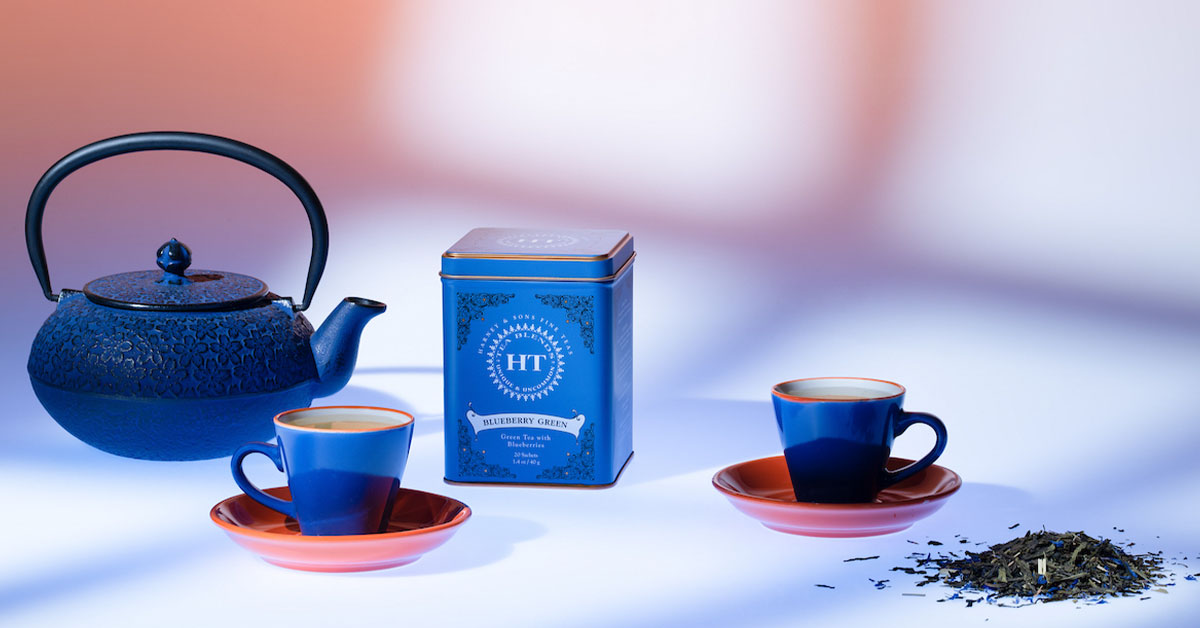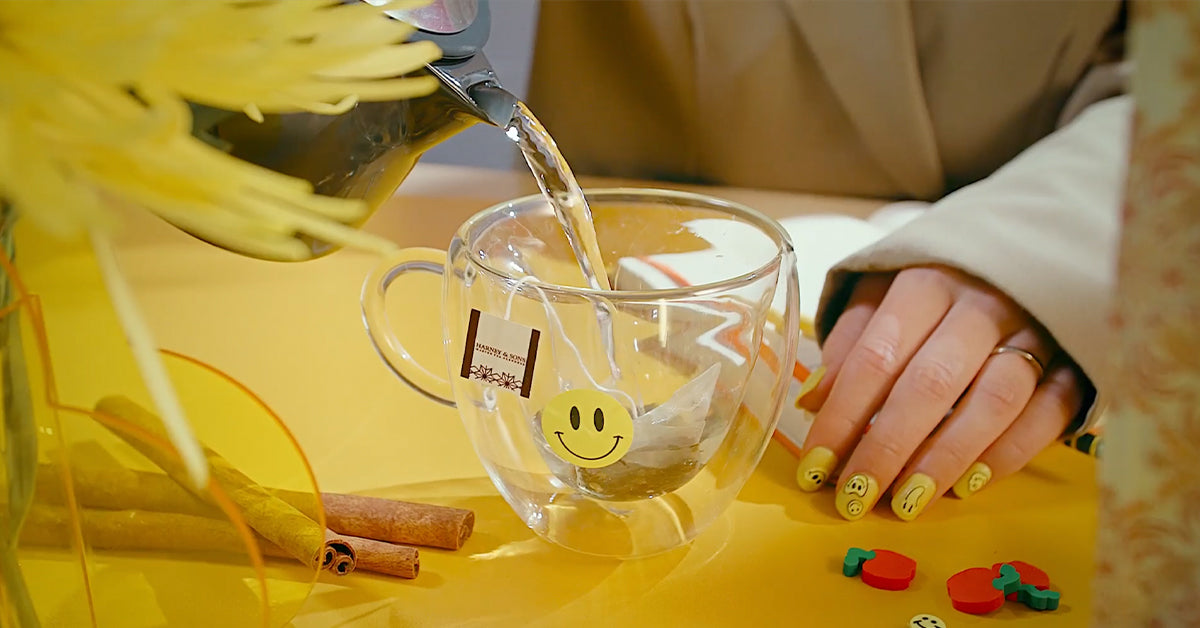Are you a big tea fan? Think you know everything there is to know about tea? We’re not saying you don’t, but in case you’re looking for ways to impress your friends and raise your tea-nerd status, here are some facts about tea that may surprise and tealight you!
Herbal teas aren’t really tea (shhh, don’t tell them!).
Ok, we’ll start with an easy one you probably already know…All “true” teas come from the Camellia sinensis plant. Herbal teas (aka “tisanes”), however, do not come from the regular tea mothership. Herbal infusions are blends of herbs, spices, flowers, and dried fruits. They were throwing herbs in hot water and drinking it as far back as ancient China. While you can count on most herbal teas to be naturally caffeine-free, there are a few outliers. Learn more on our Herbals and Tisanes: Teas from Another Mother blog.

Tea grows on trees.
If left to grow and not trimmed, tea bushes are actually trees that can grow as tall as nearly 100 feet and live 50 years or more. The bushes are trimmed to make them easier to maintain and harvest than picking tea leaves from trees! How tall they grow and how long they live varies from one variety to another, and depends on the locale. Grow your tea tree/bush knowledge by reading our Tea Bushes 101 blog.
Matcha is actually tencha.
You may have heard of sencha, and likely matcha, but it’s unlikely you’ve heard of tencha. Tencha is a green tea that is rarely drunk in its original leaf form, but is instead ground to become matcha powder. “Matcha” comes from the Japanese “ma” for “rubbed” or “ground” and “cha” which means “tea.” You can get the scoop on everyone’s favorite powdered green tea at The Truth About Matcha.

The best way to drink tea is to slurp it.
If you really want to fully experience the full range of a tea’s flavors and aromas, you need to drink it in about the rudest way possible; slurping and sloshing are involved. It is not a practice for shy individuals or those who fear being stared at in public. There are reasons, however, for learning the proper way to taste tea – you just might want to do it in the privacy of your own home. Get the tips and techniques and even watch me show you how on our Proper Way to Taste Tea blog.
Tea has started wars.
You’ve heard the phrase “not for all the tea in China,” meaning that there is no amount of money large enough to convince you to do something. This phrase came about because tea was once one of the most highly valued commodities in the world. When it finally started being exported from China and grown elsewhere, the world went crazy for it. For a long time, tea was so highly prized and sought-after that it was in large part responsible for starting wars, including both the Revolutionary War and the opium wars. We don’t think coffee can say the same thing. Read the fascinating history of tea and the role it played in war in Tea and War Part 1 and Part 2.
Tea has pets!
If you’ve ever taken part in a traditional Chinese tea ceremony, then you may be acquainted with tea pets. Tea pets are small clay figures that many tea drinkers have for good luck. They are usually made of Yixing clay and, like the Yixing teapots, they are unglazed. Chinese tea lovers “raise” their tea pet by placing it on the tray during the ceremony and pouring tea over it. Over time, this will change the color of the tea pet, which means it is well loved! While tea pets can come in the form of zodiac animals or Chinese mythical creatures, the most popular is the “pee-pee boy” whose job it is to indicate if the water is hot enough to make tea. (We are not making this up.) After soaking the pee-pee boy in cold water, hot water is poured over him. If it is the proper temperature (science is involved), the pee-pee boy will do as his name indicates—entertainment and proper water temperature all rolled into one!

If you take milk in your tea, you’re either a miffy or a tiffy.
Lots of tea drinkers enjoy a splash of milk in their tea. But did you know that there is often a fierce debate about whether you should put the milk in before you pour the tea, or after? There are even names for which way you prefer to add your milk. A “miffy” is a person who pours their milk first, and a “tiffy” is one who pours the tea first. There are some interesting arguments on both sides as to why one way is better than the other. Read all about the battle between miffys and tiffys in our Milk in Tea blog.
Afternoon tea is fancier than high tea.
If you’ve always thought that high tea is high falutin’ fancy tea, you are not alone! The truth is that afternoon tea is the fancier sort that you think of when you picture ladies in frilly dresses and hats, gloves, mini sandwiches and tiny sweets. Afternoon tea was served as indicated – in the late afternoon with participants generally seated in chairs in a living room or garden room with the tea and food served from lower tables. High tea was actually a heartier tea that the English working class enjoyed in the evenings at a dining table, i.e. a “high” table. Read more about traditional English teas on our Tea Like the Brits blog.
There are two types of fermented tea.
You may be familiar with kombucha, an extremely popular fermented tea beverage, touted for its many health benefits. You can buy bottled kombucha just about everywhere these days, but for those interested, you can make your own at home. It takes time, but will likely save you money and you can experiment with flavors. Plus, you get to play with scoby!
Pu-erh is a tea unto itself. One of the six classes of tea, this ancient tea is made in a unique way: its fixed and withered leaves are compressed into a cake, wrapped in paper and left to age for anywhere from two to 50 years. Rather than throwing tea leaves or a sachet into hot water, to make a cuppa pu-erh, you break off a piece of cake and steep it. The flavor is intense and quite different, one of those love-it-or-hate-it tastes. For those who love it – and there are millions, especially in China and Tibet – it is a staple. Learn more about this one-of-a-kind tea on our Pu-erh Tea 101 blog.

Tea has inspired unique phrases.
Spill the Tea. Not My Cup of Tea. Tempest in a Teapot. Tea and Sympathy. The aforementioned Not for all the Tea in China. I Could Murder a Cup of Tea. Only the world’s best beverage could inspire such ubiquitous phrases, right? See the stories behind the idioms at Let’s Have Fun With Tea Phrases!





1 comment
Donna
Such an interesting article, especially the tea pets! I will be reading the different links you gave in each section to learn more about delicious tea. Thank you.
Such an interesting article, especially the tea pets! I will be reading the different links you gave in each section to learn more about delicious tea. Thank you.